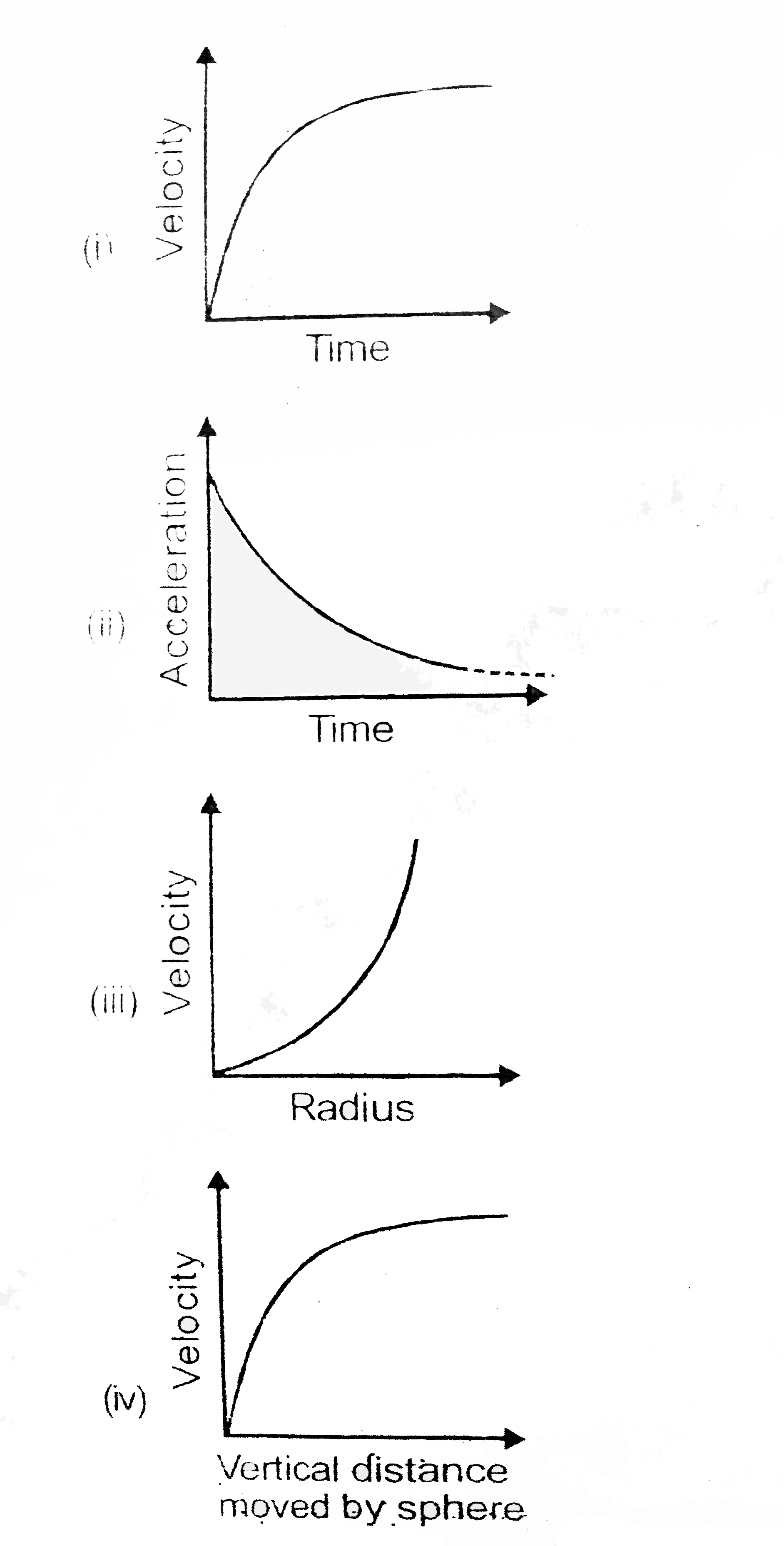When a drop of water splits up into number of droplets, then which of the following is correct?
Area increases
Energy is absorbed
Energy is liberated
All of these
To solve the problem of what happens when a drop of water splits into several smaller droplets, we can analyze the situation step by step.
1. Understanding the Volume of a Water Drop:
- The volume of a single water drop with radius R is given by the formula:
V=43πR3
2. Splitting into Smaller Droplets:
- When the drop splits into n smaller droplets, we denote the radius of each smaller droplet as r.
- The total volume of the n smaller droplets can be expressed as:
V′=n×(43πr3)
3. Setting the Volumes Equal:
- Since the volume is conserved during the splitting process, we can set the two volume expressions equal to each other:
43πR3=n×(43πr3)
- We can cancel out 43π from both sides:
R3=nr3
4. Finding the Relationship Between Radii:
- Rearranging the equation gives us:
r3=R3n
- Taking the cube root of both sides, we find:
r=R⋅n−1/3
5. Calculating the Surface Area:
- The surface area A of a single droplet is given by:
A=4πr2
- Substituting r=R⋅n−1/3 into the area formula:
A=4π(R⋅n−1/3)2=4πR2⋅n−2/3
6. Total Surface Area of All Droplets:
- The total surface area of n droplets is:
Atotal=n×A=n×4πR2⋅n−2/3
- Simplifying this gives:
Atotal=4πR2⋅n1/3
7. Conclusion:
- From the above calculations, we see that the surface area increases by a factor of n1/3 when a single drop splits into n smaller droplets.
- Additionally, during the splitting process, energy is absorbed, as it requires energy to create more surface area.
Final Answer:
- The correct options are that the surface area increases by a factor of n1/3 and energy is absorbed during the splitting process.
- The volume of a single water drop with radius R is given by the formula:
V=43πR3
- When the drop splits into n smaller droplets, we denote the radius of each smaller droplet as r.
- The total volume of the n smaller droplets can be expressed as:
V′=n×(43πr3)
- Since the volume is conserved during the splitting process, we can set the two volume expressions equal to each other:
43πR3=n×(43πr3)
- We can cancel out 43π from both sides:
R3=nr3
- Rearranging the equation gives us:
r3=R3n
- Taking the cube root of both sides, we find:
r=R⋅n−1/3
- The surface area A of a single droplet is given by:
A=4πr2
- Substituting r=R⋅n−1/3 into the area formula:
A=4π(R⋅n−1/3)2=4πR2⋅n−2/3
- The total surface area of n droplets is:
Atotal=n×A=n×4πR2⋅n−2/3
- Simplifying this gives:
Atotal=4πR2⋅n1/3
- From the above calculations, we see that the surface area increases by a factor of n1/3 when a single drop splits into n smaller droplets.
- Additionally, during the splitting process, energy is absorbed, as it requires energy to create more surface area.
- The correct options are that the surface area increases by a factor of n1/3 and energy is absorbed during the splitting process.
Topper's Solved these Questions
Similar Questions
Knowledge Check
When a drop splits up into number of drops
Aarea increasesBvolume increasesCenergy is absorbedDBoth (a) and (b)A drop of oil is placed on the surface of water. Which of the following statement is correct.
Ait will remain on it as a sphereBit will spread as a thin layerCit will partly be as spherical droplets and partly as thin filmDit will float as a distorted drop on the water surface
Which of the following has correct IUPAC numbering
View SolutionA cup filled with water has a hole in the side, through which the liquid is flowing out. If the cup is dropped from a height which of the following is/are correct?
View SolutionWhich of the following cells contain fat droplets ?
View SolutionA sphere of radius r is dropped in a liquid from its surface. Which of the following graphs is/are correct?

View SolutionWhen a drop of water is added to anhydrous CuSO4, it turns blue.
View SolutionWhich of the following is not spread by droplet method?
View Solution